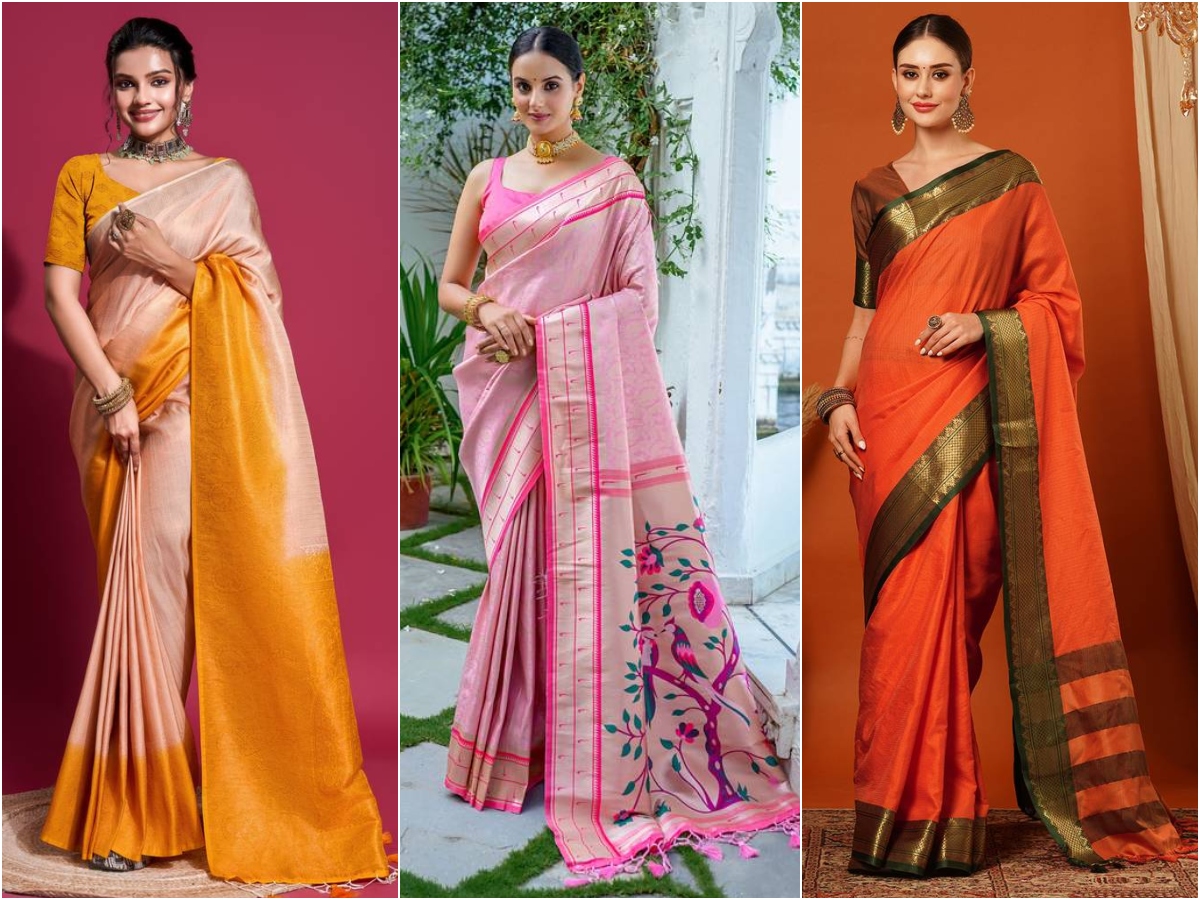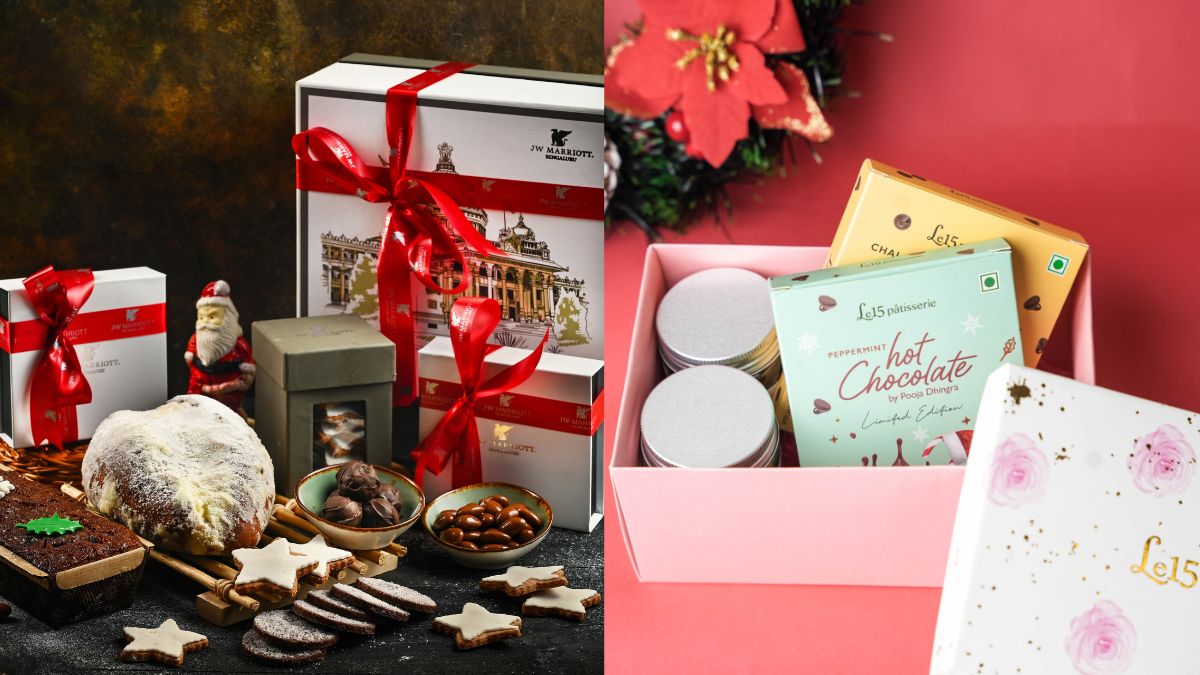South Indian Sarees – A Mix of Heritage and Sophistication
In India, a saree is well-loved due to its comfort, beauty and its ties to ancient traditions. While there are many types of sarees from different regions and cultures of India, south Indian sarees are quite popular across the nation. With their rich fabrics, attractive color combinations, striking motifs and exquisite craftsmanship, the south Indian variety of sarees are seen as a worthwhile fashion investment. While you may see a wide range of sarees online and get overwhelmed, we are here to help you with the same. We have lined up the popular must-have traditional sarees from different parts of south India that you can wear on many kinds of joyous occasions. Without further ado, let us get to know them!

Gorgeous Kinds of South Indian Traditional Sarees
Kanjeevaram Sarees
Originating from Kanchipuram, Tamil Nadu, these silk south indian sareesare known for their wide, contrasting zari borders. Motifs like checks, temples, elephants, winged horses and peacocks are prominently featured. Woven in vivid colors such as magenta, purple, parrot green and royal blue, they are ideal for weddings, festivals, and grand celebrations. With their fabric, colors and motifs, these sarees symbolize opulence and tradition. Besides, they are a top choice as south indian wedding sarees.
Kerala Kasavu Sarees
Hailing from Kerala, Kasavu sarees are available by their white or off-white in cotton or silk fabric with golden zari borders. Minimalistic yet elegant, these traditional sareesoften feature temple or floral motifs. Typically worn during Onam, Vishu and weddings, these south indian style sarees represent purity and cultural heritage. The variety of sarees with plain golden borders and cream-colored saree body can even be worn as office wear. The latest south indian sarees of this type also feature big motifs on the pallu such as flowers, paisleys, geometric shapes or dieties in hues like red, green, blue and pink.
Gadwal Sarees
Tracing its roots back to Gadwal, Telangana, this variety of sarees combine cotton with rich silk borders and pallus adorned with traditional motifs like florals, temple architecture, leaves and paisleys. They are available in earthy shades such as brown, beige, and cream as well as vibrant hues such as red, green, yellow, and pink. They are perfect for religious ceremonies and cultural events.
Pochampally Sarees
From Pochampally in Telangana, these sarees are renowned for their intricate ikat weaving technique, creating geometric patterns. They are often available in bold and contrasting colors such as blue and orange; yellow and pink or white and purple. These versatile sarees from south india are suitable for weddings, casual gatherings, and office wear.
Mysore Silk Sarees
Crafted in Mysore, Karnataka, these sarees are made of pure silk with minimalistic zari work and solid or striped designs. Available in jewel tones like ruby red and emerald green as well as combinations such as yellow and purple and pink and dark blue. Mysore silk sarees are ideal for weddings, receptions, and formal occasions as they represent elegance and luxury. These are also considered a great option as a bridal saree.
Uppada Silk Sarees: These sarees come from Uppada, a coastal town in Andhra Pradesh, India. Known for their lightweight texture, these sarees are handwoven using the age-old Jamdani technique. They feature intricate floral, paisley, and geometric motifs, often adorned with zari work. They are available in vibrant colors like red, green, and gold as well as pastel shades like lavender, mint green and powder blue. These south indian sarees are greatfor weddings, festivals, and formal occasions.
Narayanpet Sarees: Originating from Narayanpet, a town in Telangana, this variety of sarees can be made from cotton, silk or cotton-silk. These south indian sarees feature a distinctive striped or checked pattern with traditional temple border motifs like peacocks, elephants and lotuses and contrasting pallus. These sarees come in traditional colors like red, yellow and green as well as popular modern hues like rust orange, ash grey and teal. The cotton sarees are ideal for daily wear, casual gatherings and office parties while silk and cotton-silk are perfect for festive occasions.
Effortless Ways to Style South Indian Sarees
While these traditional sarees look quite good, styling them with other aspects can level up the overall look. For jewelllery, pick pieces according to the occasion. For festivals and religious occasions, temple jewellery sets are ideal as they also have traditional motifs and often encrusted with colorful stones for a luxurious look. If you are attending casual gatherings or office occasions, simple pearl or diamond pieces like earrings, bracelets or necklace can work wonders. For bags, you can choose from a metallic clutch, embroidered batua or a neutral-colored handbag. In the case of footwear, the options are block heels, kolhapuri chappals or strappy sandals.




